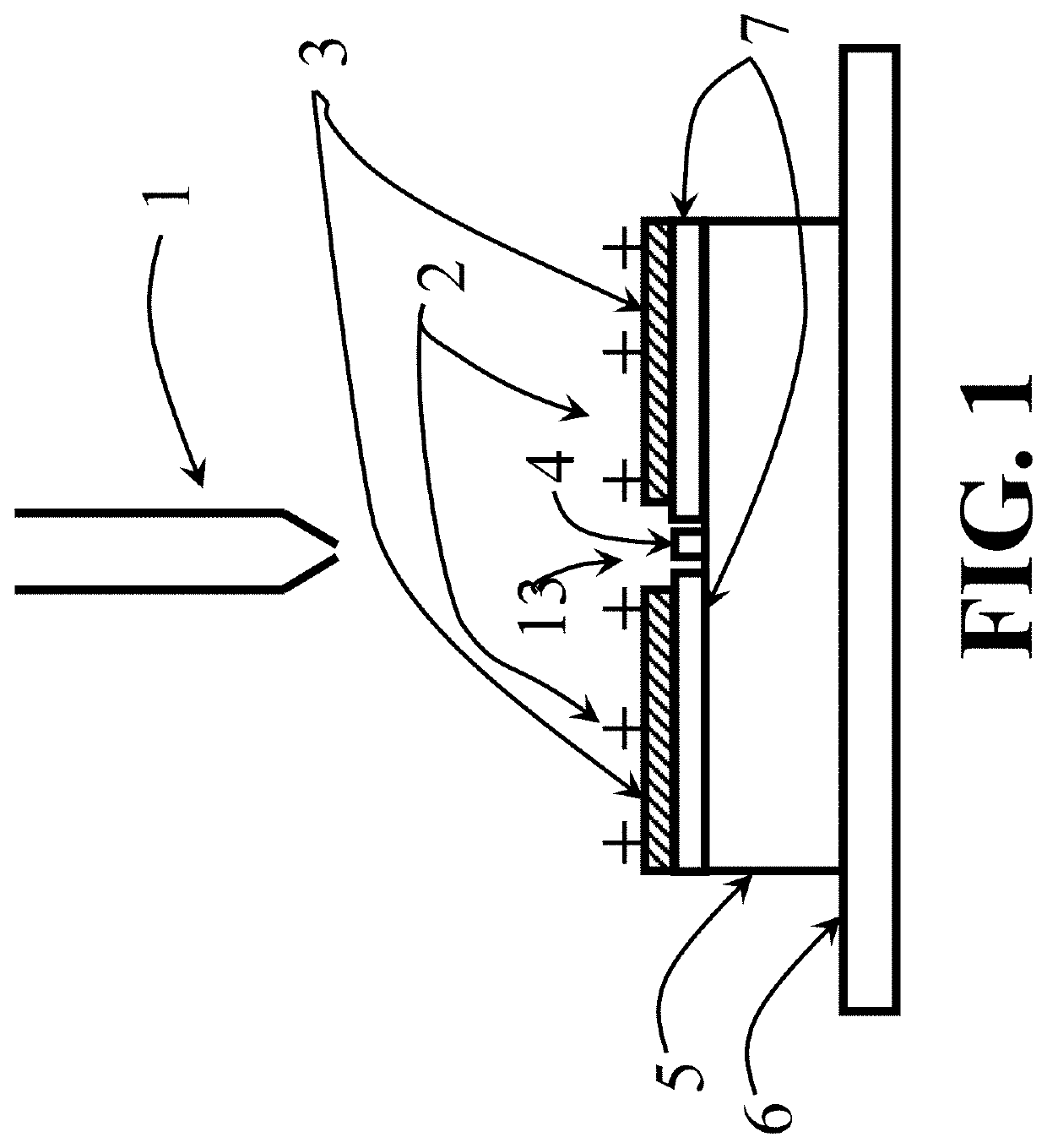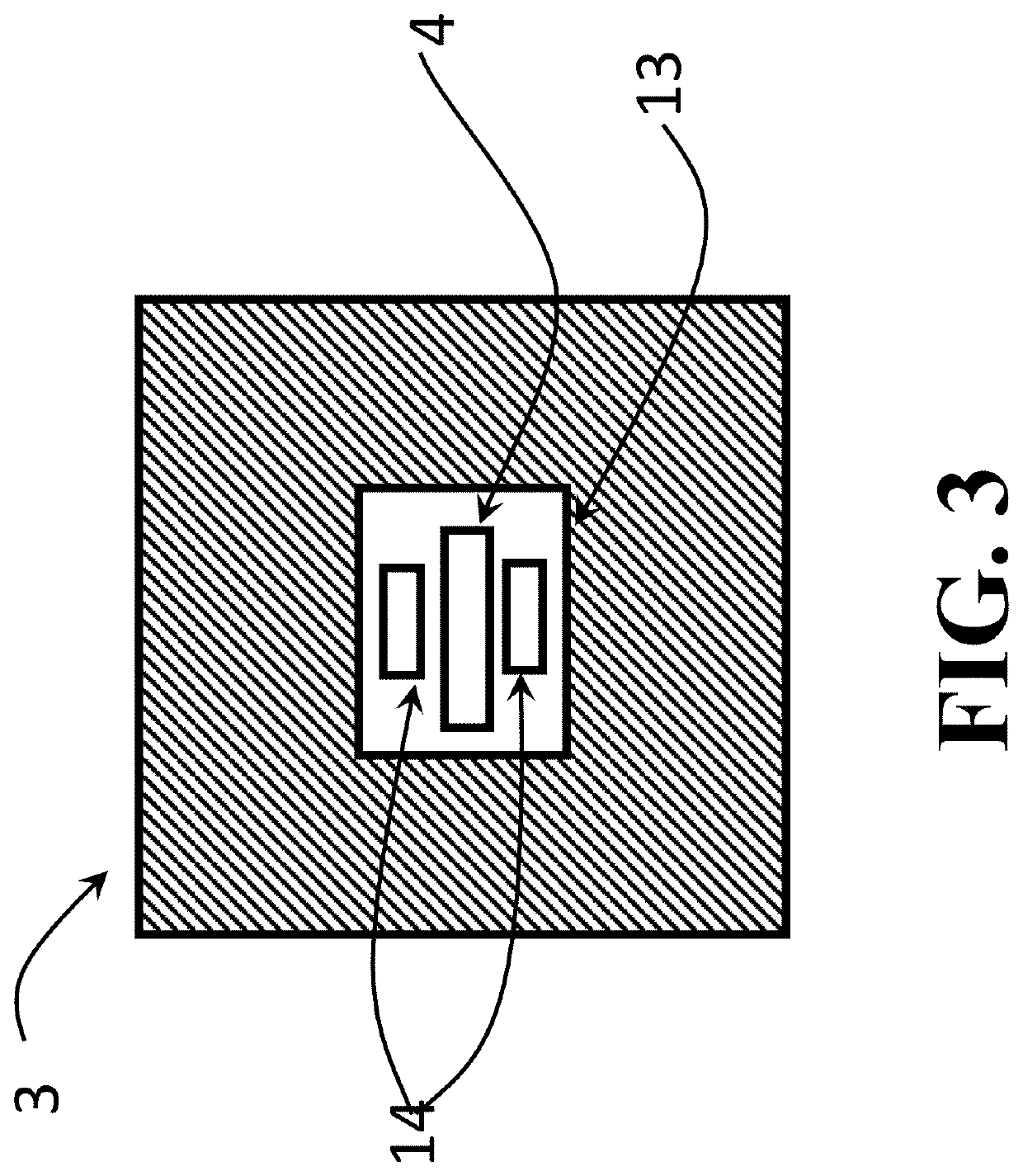Device for obtaining the mass of single nanoparticles, viruses and proteins in suspension or in solution with high-collection efficiency
a nanoparticle, virus and protein technology, applied in the direction of particle separator tube details, electron/ion optical arrangements, instruments, etc., can solve the problem of insufficient collection efficiency of nems-ms techniques, small collection efficiency of species, and insufficient mass estimation of used microcantilevers. problem, to achieve the effect of increasing the collection efficiency of nems-ms approaches, high collection efficiency, and increasing the collection efficiency
- Summary
- Abstract
- Description
- Claims
- Application Information
AI Technical Summary
Benefits of technology
Problems solved by technology
Method used
Image
Examples
Embodiment Construction
[0043]The present invention device comprises a first device for creating charged particles of interest in gas phase, a second device for determining the mass of the particle by a frequency measurement comprising at least one gravimetric detector (mass sensor) and a third device that is fabricated on the same chip with, and surrounding the second device to focus and guide the majority of the incoming charged particles including at least the particle by means of holding charge on itself to act as an electrostatic lens. The charge on the third device can be induced either by the original electrospray of the same polarity as the particle itself or by a separate mechanism such as, including but not limited to, by using a separate tip to generate charging through a proper mechanism such as electrospray or corona discharging.
[0044]Preferably, the subject-matter of the invention, the device further comprises a separate electrostatic lens in the free space between the first device and the th...
PUM
| Property | Measurement | Unit |
|---|---|---|
| thickness | aaaaa | aaaaa |
| molecular mass | aaaaa | aaaaa |
| diameter | aaaaa | aaaaa |
Abstract
Description
Claims
Application Information
 Login to view more
Login to view more - R&D Engineer
- R&D Manager
- IP Professional
- Industry Leading Data Capabilities
- Powerful AI technology
- Patent DNA Extraction
Browse by: Latest US Patents, China's latest patents, Technical Efficacy Thesaurus, Application Domain, Technology Topic.
© 2024 PatSnap. All rights reserved.Legal|Privacy policy|Modern Slavery Act Transparency Statement|Sitemap



